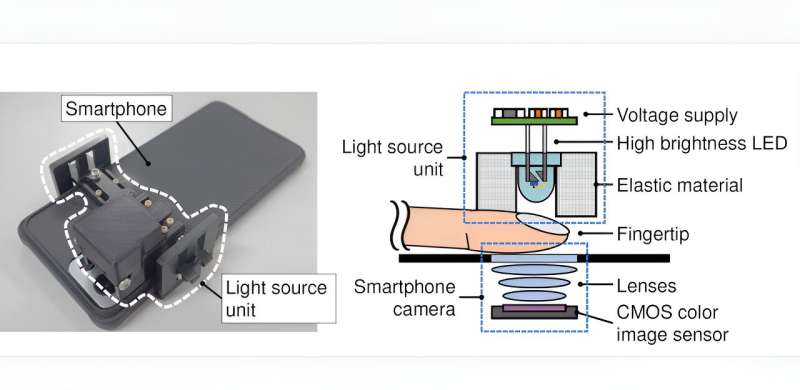This article has been reviewed according to Science X's editorial process and policies. Editors have highlighted the following attributes while ensuring the content's credibility:
fact-checked
peer-reviewed publication
trusted source
proofread
Lighting the way to noninvasive blood glucose monitoring using portable devices

Diabetes is a prevalent disease that, unfortunately, still has no cure. People with diabetes need to monitor their blood glucose levels (BGLs) regularly and administer insulin to keep them in check. In almost all cases, BGL measurements involve drawing blood from a fingertip through a finger prick. Since this procedure is painful, less invasive alternatives that leverage modern electronics are being actively researched worldwide.
Thus far, several methods to measure BGL have been proposed; using infrared light is a prominent example, and mid-infrared light-based devices have shown reasonable performance. However, the required sources, detectors, and optical components are costly and difficult to integrate into portable devices.
Near-infrared light (NIR), in contrast, can be readily produced and detected using inexpensive components. Many smartphones and smartwatches already use NIR sensors to measure heart rate and blood oxygen levels. Unfortunately, glucose does not have unique absorption peaks in the NIR region, and it is therefore difficult to distinguish it from other chemicals in the blood, such as lipids and proteins.
To tackle this limitation, a research team led by Tomoya Nakazawa of Hamamatsu Photonics (Japan) recently developed a novel methodology to estimate BGLs from NIR measurements. Their work, which could revolutionize noninvasive blood glucose monitoring, was published in the Journal of Biomedical Optics.
The core contribution of this study is a new blood glucose level index that the research team derived from basic NIR formulas. Their approach begins with the extraction of oxyhemoglobin (HbO2) and deoxyhemoglobin (Hb) signals from NIR measurements.
Through the analysis of massive amounts of data on NIR measurements, the researchers realized that the phase delay (asynchronicity) between the low-frequency and oscillating components of HbO2 and Hb signals is closely related to the degree of oxygen consumption during each cardiac cycle, thereby serving as a gauge for metabolism.
"This phase delay-based metabolic index, which has not been reported by other researchers, is a scientifically important discovery," remarks Nakazawa.
The team then sought to prove the relationship between this newfound metabolic index and BGLs through a series of experiments. First, they used the NIR sensor on a commercial smartwatch by placing it over the finger of a healthy subject at rest. The subject then consumed different sugary and sugar-free beverages to induce changes in blood glucose.
Similar experiments were conducted using a custom smartphone holder with a high-brightness LED. The results were very promising, as the changes in the metabolic index closely matched variations in blood glucose levels measured by a commercial continuous glucose monitor. This confirms that the phase delay between the HbO2 and Hb is indeed closely correlated with BGLs.
Clinical tests on diabetic individuals are pending to confirm the applicability of the metabolic index in a real-world context. Still, the researchers have high hopes for their innovative technique, as Mr. Nakazawa says, "The proposed method can in principle be implemented in existing smart devices with a pulse oximetry function and is inexpensive, battery-saving, and simple compared with other noninvasive blood glucose monitoring techniques. Thus, our approach could be a powerful tool towards portable and accessible BGL monitoring devices in the future."
More information: Tomoya Nakazawa et al, Non-invasive blood glucose estimation method based on the phase delay between oxy- and deoxyhemoglobin using visible and near-infrared spectroscopy, Journal of Biomedical Optics (2024). DOI: 10.1117/1.JBO.29.3.037001



















